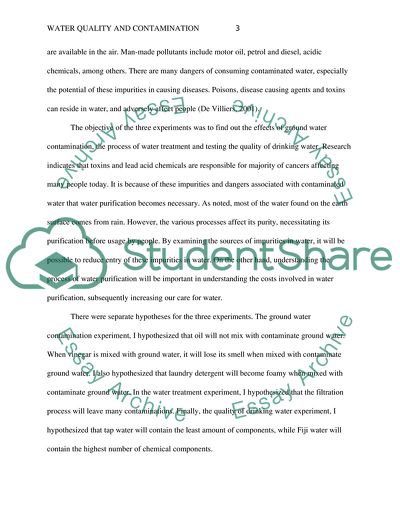Cite this document
(Water Quality and Contamination Lab Report Example | Topics and Well Written Essays - 2000 words, n.d.)
Water Quality and Contamination Lab Report Example | Topics and Well Written Essays - 2000 words. https://studentshare.org/environmental-studies/1879136-write-a-complete-laboratory-report-that-covers-all-three-experiments-for-lab-2-water-quality-and-contamination
Water Quality and Contamination Lab Report Example | Topics and Well Written Essays - 2000 words. https://studentshare.org/environmental-studies/1879136-write-a-complete-laboratory-report-that-covers-all-three-experiments-for-lab-2-water-quality-and-contamination
(Water Quality and Contamination Lab Report Example | Topics and Well Written Essays - 2000 Words)
Water Quality and Contamination Lab Report Example | Topics and Well Written Essays - 2000 Words. https://studentshare.org/environmental-studies/1879136-write-a-complete-laboratory-report-that-covers-all-three-experiments-for-lab-2-water-quality-and-contamination.
Water Quality and Contamination Lab Report Example | Topics and Well Written Essays - 2000 Words. https://studentshare.org/environmental-studies/1879136-write-a-complete-laboratory-report-that-covers-all-three-experiments-for-lab-2-water-quality-and-contamination.
“Water Quality and Contamination Lab Report Example | Topics and Well Written Essays - 2000 Words”. https://studentshare.org/environmental-studies/1879136-write-a-complete-laboratory-report-that-covers-all-three-experiments-for-lab-2-water-quality-and-contamination.


